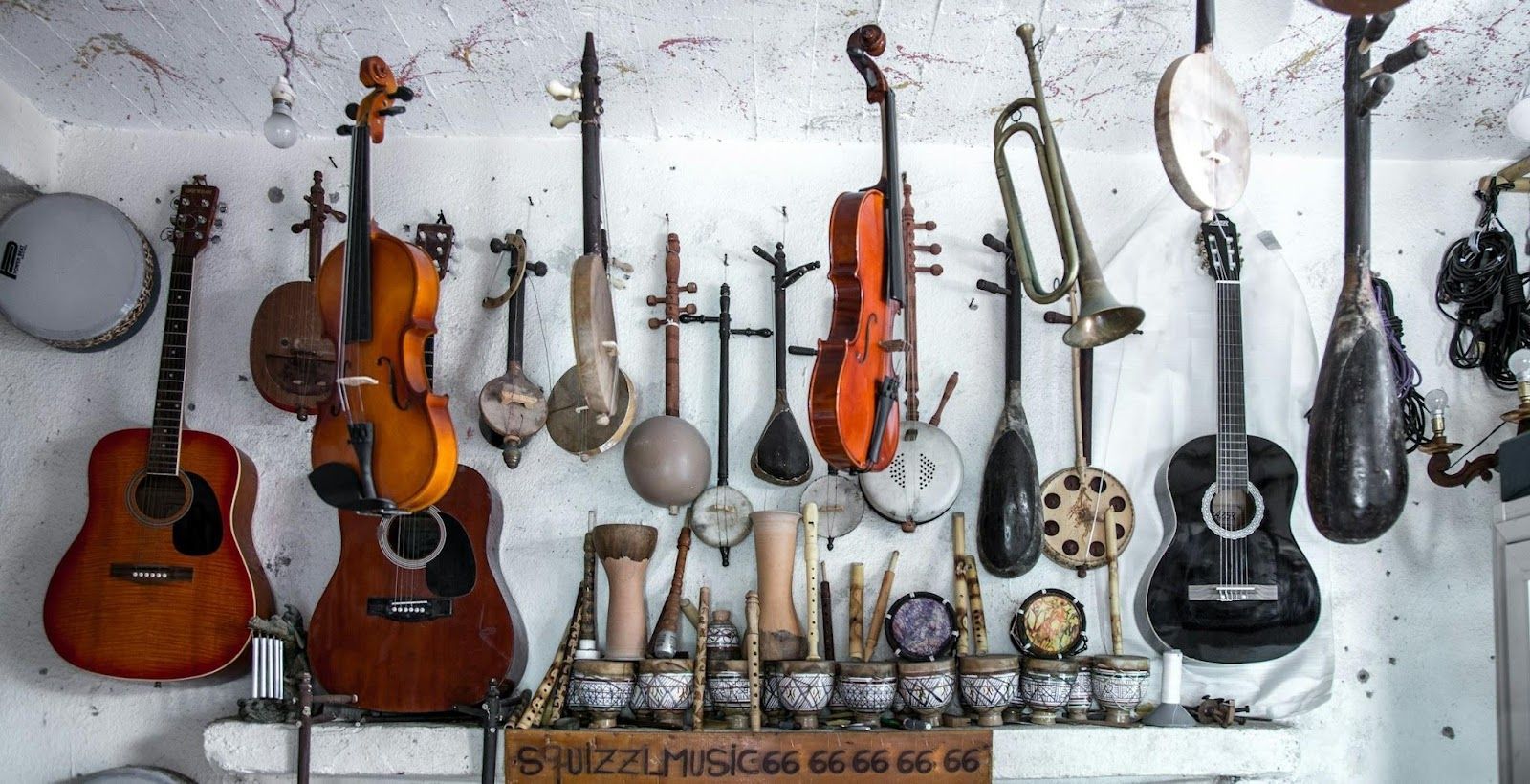Ancient tunes
Did you know that trumpets are one of the oldest instruments out there?
Published on March 29, 2025
 Credit: Karim MANJRA
Credit: Karim MANJRA
Music has been a part of our civilization since ancient times: In fact, some archaeologists believe that humans have played and enjoyed music since the dawn of time. In any case, while music understandably evolves as we do, the sense of wonder and magic that we feel whenever we hear a particularly good song is probably similar to what our forefathers felt. However, it is true that the ancient times didn’t have the instruments we know today, so we have decided to highlight 10 instruments from the past: Some of these instruments are the direct ancestors of some of our modern instruments, while others remain relevant to this day. Enjoy!
Lute
 Credit: Birmingham Museums Trust
Credit: Birmingham Museums Trust
We’ll start with the closest ancestor to the quintessential musical instrument of our times. While the guitar reigns supreme in any rock band worth its salt, the lute was definitively the instrument of choice for most Renaissance musicians. However, the origins of this instrument date back a lot farther: Some Ancient Egyptian hieroglyphs depict musicians playing early versions of the lute.
Ocarina
 Credit: Luigie Guissepe Marin Astete
Credit: Luigie Guissepe Marin Astete
The ocarina, also known by the less dignified name of "potato flute", is one of the oldest instruments out there, dating back 12,000 years before our time. Most ocarinas are comprised of an enclosed space, usually made of clay or ceramic, and they have between 4 and 12 finger holes and a mouthpiece. The earliest versions of this instrument were found in China, where it played an essential part in the development of this civilization’s music.
Didgeridoo
 Credit: Philipp Aleev
Credit: Philipp Aleev
The didgeridoo is one of the peculiar instruments in this article. Developed by Australian aboriginal tribes at least 1,000 years ago, the droning and unique sound of the didgeridoo comes from its distinctive (and difficult to master) breathing technique. Traditionally, didgeridoo makers made use of trees that had a large termite presence since their activity would render the branches of these trees hollow and perfect for making this instrument.
Gong
 Credit: Manuel Cossio
Credit: Manuel Cossio
Nowadays, the gong is considered more of a ceremonial tool than a traditional musical instrument: For instance, a gong was once struck at the start and end of trading on Wall Street until it was replaced by a bronze bell in 1903. However, you can still see this percussion instrument present in some orchestras, especially in those who regularly play traditional music from Southeast Asia and East Asia.
Pan flute
 Credit: SHVETS production
Credit: SHVETS production
Have you ever wondered where the Pan flute got its name? It comes from Pan, the Ancient Greek god of nature and shepherds. This god is usually depicted with the hindquarters of a goat and playing this traditional instrument. Interestingly, the pan flute is, to this day, an essential part of traditional South American music, and it is found in pieces all over the continent.
Maracas
 Credit: Alena Darmel
Credit: Alena Darmel
Before becoming a staple instrument in traditional Mexican music, the earliest version of the maracas could be found in pre-Columbian societies in Latin and South America: Ancestors to the maracas we know today were present in places like Brazil, Venezuela, and even the U.S. state of Florida.
Trumpets (Tutankhamon)
 Credit: Chris Bair
Credit: Chris Bair
In 1922, when archaeologist Howard Carter excavated Tutankhamun's tomb, he came across a pair of silver and bronze trumpets, the earliest version of this instrument at the time. Nowadays, we know that other ancestors of the trumpet could be found in Scandinavia (known as the lurr) and in Ancient China.
Lyre
 Credit: Hert Niks
Credit: Hert Niks
Just like the pan flute, the lyre is one of the quintessential instruments associated with the Ancient Greeks: The Greeks believed that it was created by the god Hermes, although Apollo, the god of music, is often depicted holding a lyre in his arms. Regardless, this instrument is closely related to the lute and, as such, it is a direct ancestor to both the harp and the guitar.
Koto
 Credit: Jean-Pierre Dalbéra, CC BY 2.0
Credit: Jean-Pierre Dalbéra, CC BY 2.0
To this day, Japan holds its traditional instruments in high regard: It is not uncommon to see a skilled musician play the shamisen or the taiko drum. However, the instrument that is perhaps closest to this nation’s heart is the koto, considered Japan’s national instrument. The koto was brought to Japan from China during the 7th and 8th centuries, where it quickly became synonymous with traditional Japanese music.
Flute
 Credit: Nishal Pavithran
Credit: Nishal Pavithran
We’ll end with the oldest known musical instrument in history. A pair of bone flutes was found by archaeologists in Germany, dating back to an outstanding 40,000 years before our time. What’s perhaps most moving about these rudimentary flutes is that experts believe that they were used in important ceremonies, or for something as important as storytelling: These simple facts are a perfect example of why music is so essential for our development as a species.












